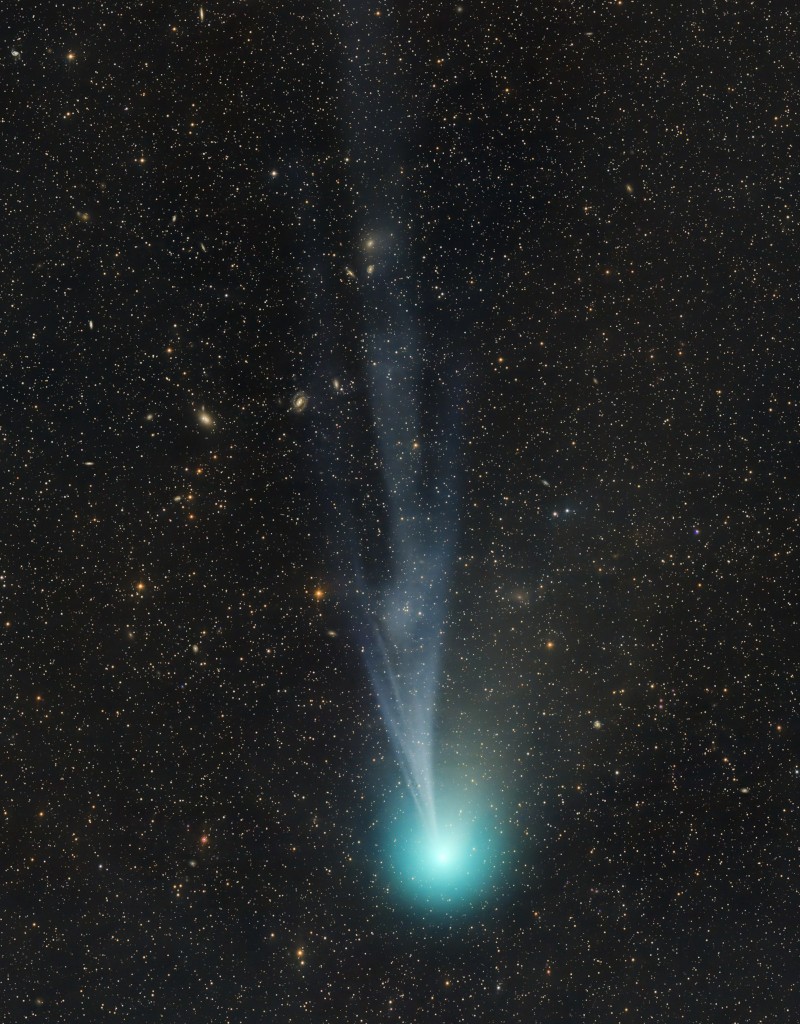NASA's Astronomy Picture of the Day has showcased a mystical image of the glowing tail of Comet 12P/Pons-Brooks, offering a glimpse into the intricate structures within its celestial trail as it heads towards its next perihelion passage on April 21.
Comet 12P/Pons-Brooks Increasing in Brightness
Comet 12P/Pons-Brooks, a periodic Halley-type comet, has been steadily increasing in brightness, making its greenish coma relatively easy to observe in small telescopes.
However, the bluish ion tail trailing behind the active comet's coma presents a more challenging spectacle to follow, buffeted by the solar wind and appearing faint to the naked eye, according to NASA.

On the night of February 11, a series of stacked exposures captured by astronomers reveal the detailed structures within the fainter tail, spanning over two degrees across a backdrop of faint stars and distant galaxies in the northern constellation Lacerta.
NASA noted that Comet 12P/Pons-Brooks will reach perihelion on April 21, and it will happen only two weeks after the total solar eclipse on April 8, putting the comet in planet Earth's sky along with a totally eclipsed sun.
A perihelion passage refers to the point in the orbit of a celestial object, such as a comet or a planet, when it is closest to the sun. For comets, this is when they reach their closest approach to the sun along their highly elliptical orbits.
During this passage, comets experience intense heating from the sun, causing them to release gases and form a bright coma and tail, which are visible from Earth.
The perihelion passage is a significant event in the study of comets as it allows astronomers to observe their behavior and their composition as they interact with the solar environment.
Is Comet 12/Pons-Brooks Hazardous?
According to Space Reference, Comet 12P/Pons-Brooks is an object with a medium-length orbit and is highly inclined to the solar system's ecliptic plane. Classified as a "Near Earth Asteroid" by NASA JPL due to its orbit's proximity to Earth, it is deemed not potentially hazardous based on current computer simulations.
With an orbital period of approximately 71.18 years, Comet 12P/Pons-Brooks completes its journey around the sun, ranging from as close as 0.78 AU to as far as 33.58 AU. Its highly elliptical orbit brings it within 0.18 AU of Earth's orbit at its closest point, ensuring a wide berth between the asteroid and Earth at all times.
Despite its proximity to Earth's orbit, orbital simulations conducted by NASA JPL's CNEOS do not indicate any close approaches to our planet, providing reassurance regarding potential collision risks.
The orbit of Comet 12P/Pons-Brooks has been meticulously determined through observations dating back to June 20, 1953, with the most recent official observation recorded on August 6, 2023.
A total of 1,786 observations have been utilized by the IAU Minor Planet Center to refine its orbital parameters, contributing to our understanding of this fascinating celestial object's trajectory through the cosmos.
Related Article : NASA's Picture of the Day Dives Into a Treasure Trove of Deep Nebulas

ⓒ 2025 TECHTIMES.com All rights reserved. Do not reproduce without permission.




